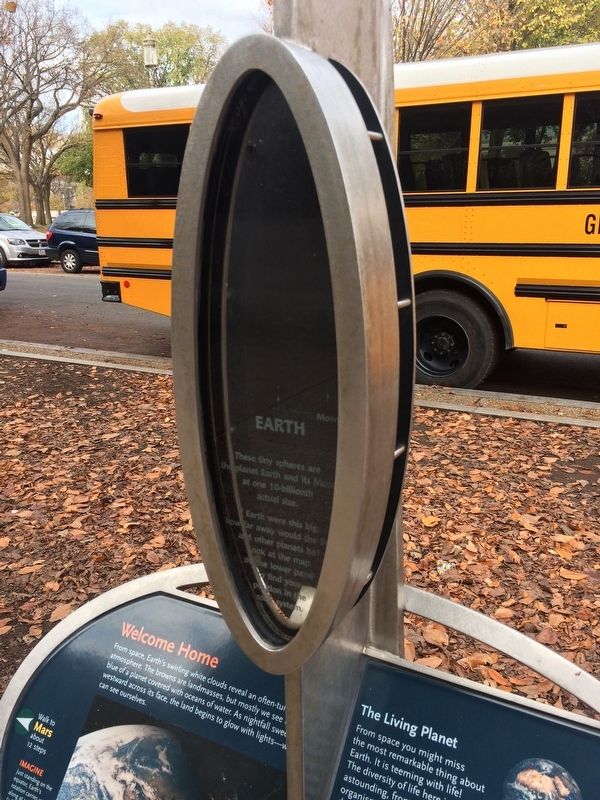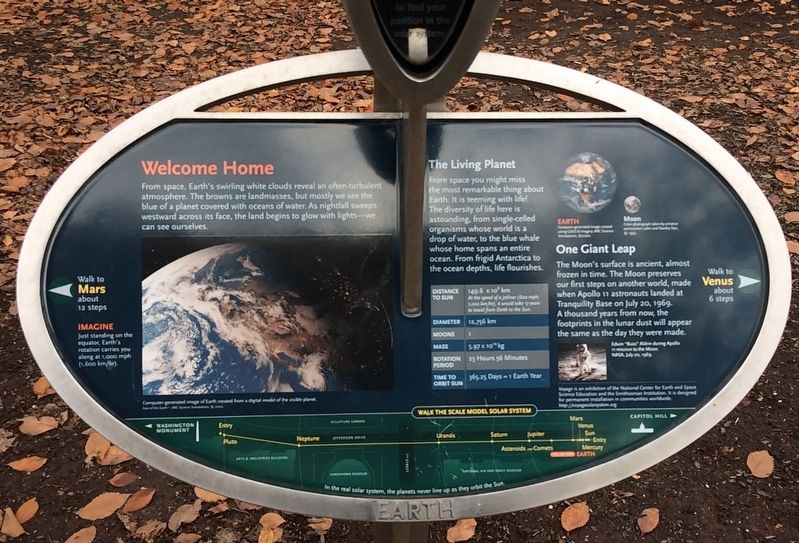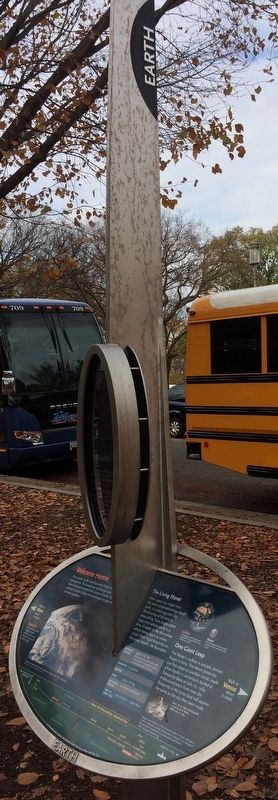The National Mall in Southwest Washington in Washington, District of Columbia — The American Northeast (Mid-Atlantic)
Earth
These tiny spheres are the planet Earth and its Moon at one 10-billionth actual size.
If Earth were this big, how far away would the Sun and other planets be? Look at the map on the lower panel to find our position in the solar system.
Welcome Home
From space, Earth's swirling white clouds reveal an often-turbulent atmosphere. The browns are landmasses, but mostly we see the blue of a planet covered with oceans of water. As nightfall sweeps westward across its face, the land begins to glow with lights--we can see ourselves.
The Living Planet
From space you might miss the most remarkable thing about Earth. It is teeming with life! The diversity of life here is astounding, from single-celled organisms whose world is a drop of water, to the blue whale whose home spans an entire ocean. From frigid Antarctica to the ocean depths, life flourishes.
One Giant Leap
The Moon's surface is ancient, almost frozen in time. The Moon preserved our first steps on another world, made when Apollo 11 astronauts landed at Tranquility Base on July 20, 1969. A thousand years from now, the footprints in the lunar dust will appear the same as the day they were made.
Edwin "Buzz" Aldrin during Apollo on mission to the Moon.
NASA, July 20, 1969
Walk the scale Model Solar System
Walk to Mars about 12 steps
Imagine
Just standing on the equator, Earth's rotation carries you along 1,000 mph (1,600 km/hr).
Walk to Venus about 6 steps.
Erected 2013 by Smithsonian Institution.
Topics. This historical marker is listed in this topic list: Air & Space. A significant historical date for this entry is July 20, 1969.
Location. 38° 53.323′ N, 77° 1.123′ W. Marker is in Southwest Washington in Washington, District of Columbia. It is in The National Mall. Marker is on Jefferson Drive Southwest west of 4th Street Southwest, on the left when traveling west. On the grounds of the National Air and Space Museum. Touch for map. Marker is at or near this postal address: 600 Independence Southwest, Washington DC 20560, United States of America. Touch for directions.
Other nearby markers. At least 8 other markers are within walking distance of this marker. Mercury (here, next to this marker); Mars (a few steps from this marker); Asteroids and Comets (within shouting distance of this marker); Star Nurseries (about 300 feet away, measured in a direct line); T.S.C. Lowe's Observation Flight (about 300 feet away); Cook Telescope (about 300 feet away); Saturn (about 300 feet away); Binary Stars (about 300 feet away). Touch for a list and map of all markers in Southwest Washington.
Credits. This page was last revised on January 30, 2023. It was originally submitted on November 14, 2017, by Devry Becker Jones of Washington, District of Columbia. This page has been viewed 243 times since then and 21 times this year. Last updated on February 10, 2018, by Devry Becker Jones of Washington, District of Columbia. Photos: 1, 2, 3, 4. submitted on November 14, 2017, by Devry Becker Jones of Washington, District of Columbia. • Andrew Ruppenstein was the editor who published this page.



